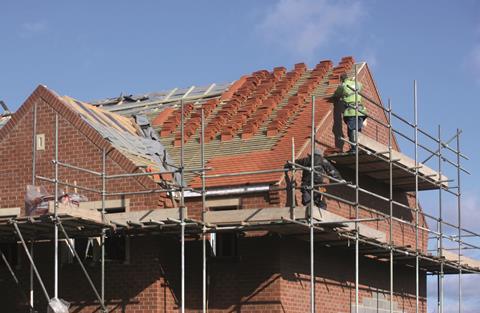Things couldn’t get rosier for the housebuilders, it would seem. Sales volumes and prices are up, irrespective of dwindling government support.

No problem on the ‘demand side’ – but the ‘supply side’ is another matter. It’s all down to timing.
In its 7 May trading update, Britain’s largest housebuilder Barratt Developments raised its estimate for the number of home sales for the financial year for the second time, while price inflation is running at a perky 4%, despite the looming unwinding of the Stamp Duty holiday and tightening up of the Help to Buy requirements.
But the issue of cost has been preoccupying investors across the sector. So far, the focus has been on material costs and shortages rather than housebuilders’ most crucial ingredient – land.
Barratt was keen to stress it was continuing to source enough sites, but chief operating officer Steven Boyes conceded: “If you’ve got planning consent, it’s a good time to sell land.”
Rival Bellway’s CEO Jason Honeyman has been more candid with investors: “I wouldn’t say the land market is frenzied, [but] it’s exceptionally busy.”
According to Honeyman, small, medium and large housebuilders are all suddenly competing for sites, with demand most acute, it appears, for those that have detailed planning permission and are ready to go.
‘Caught short’
Many firms were ‘caught short’ as the housing market recovered faster than most had dreamt during the second half of 2020.
When the industry was unlocked in May, developers initially concentrated on completing homes that had already been pre-sold and were nearing the end of construction. This can be very cash-generative, as buyers stump up after most building costs have already been spent.
There had originally been some hesitancy to start building new ones on developers’ existing sites, but Rishi Sunak’s Stamp Duty holiday super-charged demand. Builders had also stashed away just about every penny, cancelled dividends and benefited from government support (‘The cash preservation society’).

They were awash with cash, but, on the whole, had not topped up their short-term land banks. Even for companies with long-term land banks (at various stages of planning), Covid has slowed the process, increasing demand for ‘oven-ready’ sites, particularly those for up to a couple of hundred units. A lot of builders with a lot of cash chasing a scarce resource means only one thing. A well-known privately owned South East developer tells me his company put in a bid for a site at low double-digit millions only to be told the lowest rival bid that made the shortlist was some 25% higher.
The rule of thumb when buying a plot is that land, materials and labour account for around a quarter each of anticipated selling prices, with the remainder being the targeted gross profit. Galloping rises in land costs now will feed through to margins reported as homes sell over the next one to three years – unless matched by rising house prices. The reassuring news is labour rates are fairly benign; material costs less so.
Supply stress
Early indications had been that supply issues and costs were limited to a few materials, especially timber and steel. Every week, though, seems to add another line to that ‘limited’ list and brings new shortages, all for varying reasons. Plastic prices have surged after a fire in a giant Texas plant coincided with closures from rivals in the Lone Star state due to snowstorms. British Steel this week “temporarily” closed its orderbook to contractors “due to extreme high demand”.
Combating climate change is likely to push up costs across the board. Energy costs for cement manufacturers have been fuelled by ‘carbon credits’ they have to pay, doubling to around €50 a tonne. One irate UK concrete-block maker fumed that one foreign-owned mogul was trying to pass on all the increase to its external customers rather than sharing it with its own internal ready-mixed concrete customers. I’ll not repeat the adjectives.
There’s also a scramble to find trucks, since nobody bought (or made) any last year. As with timber, manufacturers can’t instantly flick the switch back on (it takes some two months from felling a pine in Sweden to taking delivery of treated planks in Swindon). Oh, and next April will see the end of cheaper ‘red diesel’ – likely to double fuel costs. The Future Homes Standard – and, especially for housing associations, recladding costs – will pressurise margins and possibly the viability of developments.
Housebuilders have two options: accept lower future margins on homes built on the new plots they are bidding for; or stick to their guns or even raise their profit requirements (‘hurdle rates’ in the jargon) and thus bid lower – and lose, although vendors may give preferential prices to bigger developers ‘off market’ on a ‘better-the-devil-you-know’ basis.
Ultimately, land values should adjust downwards. But some builders may get caught out paying top whack. Timing, as always, is everything in housebuilding.
Alastair Stewart is an equities analyst and consultant





























No comments yet